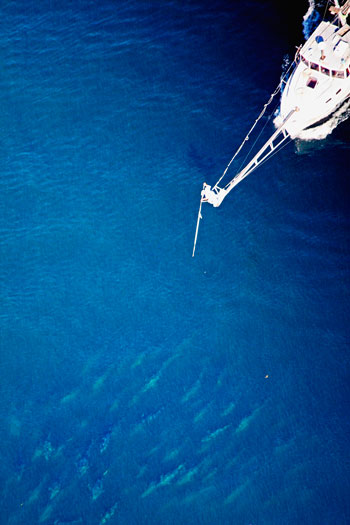Blue Fin Tuna: Quality Up,
Numbers Down, Prices Flat
continued from Homepage

Wayne Davis photo. wayne@oceanaerials.com
Bob Kliss at North Atlantic Traders reports the fish his company was buying a month ago were, “much better quality, but the number of fish down by about 1/3 from August 2012.” He said they are just not seeing a lot of bluefin off Maine or in New Hampshire and Ipswich Bay. Offshore harpooners are catching fish.
Rich Ruais of the Atlantic Bluefin Tuna Association has been involved with Amendment 17 discussions. He predicts major reallocations of quota to the 5 user groups from Amendment 17. Longliners, he said, will be getting more quota from the National Marine Fisheries Service (NMFS) in its effort to end discards. “NMFS will be stealing quota from the historic shares of other user groups like the harpooners to rename longline discards”, said Ruais.
“Unfortunately”, said Ruais, “because NMFS doesn’t have funding for 100% observer coverage as a means of ending discards they instead are going to give longliners, which targets swordfish, additional quota so they can land what they have been discarding. Included in this annual quota shift is 220 metric tons of bluefin tuna, many of them giants, that are discarded”.
The Japanese markets were still being flooded with tuna from the Western Pacific and other parts of the world. U.S. markets however have remained strong while the prices here have remained comparatively low.
Bob Fitzpatrick, at Maguro USA, said a month ago that tuna are scarce. He described it as the slowest year in a long time, but he said, it is also early in the season. “At this point we’re only about 85 MT into a 400 plus MT quota”, he said at the end of August. The silver lining in the exchange rate with Japan is that American markets are picking up some of the slack. “The $11 boat price to a fisherman for a fish sold to Japan is now still $11 when sold here, said Fitzpatrick.
The Canadian bluefin catch is expected to be coming on soon. Canadians were reporting large numbers of tuna, said Kliss in August. Typically he gets about 20% of his fish out of Canada, but he expects the percentage will be higher this year because there are few in the northeast U.S.
Canadians have also learned how to take better care of their tuna. In part this is a result of the Canadians having more larger boats with more resources aboard, said Kliss. They use brine tanks, more ice and they swim the fish over the side to calm them down before killing them, etc.
Late in September Fitzpatrick reported things were so dead he called it a non-fishery. He said it started slowing down in mid-August and in the middle of September, aside from occasional flurries of activity, it has not been good he said. “We are getting five fish a week rather than 8 to 10 a day despite lots of herring and white fish. The one thing I know for sure is ‘I don’t know’ ”, said Fitzpatrick.
He said he saw about 50 boats at the outer flags off Rye New Hampshire looking for tuna. Georges has been quiet. Prince Edward Island has been pretty good, but the Hell Hole and the Eastern Shore have been slow there.
Amendment 17, following delays, is expected to be finalized and placed in the National Register by the end of August. Rich Ruais will be reporting on Amendment 17 and the likely fallout from it in the November Fishermen’s Voice.
